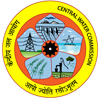Discharge Observation
Discharge Observation
Discharge observation is conducted once a day at 08.00 Hrs, at all the sites by area velocity method except on Sunday and holidays in non Monsoon period. However additional observations were conducted during floods to cover different stages, irrespective of holidays. The River width is generally divided into 15 to 25 segments based on the degree of accuracy as outlined in IS: 1192-1981. The width of the River is measured by steel/metallic tape or wire rope stretched across the River with segment markings indicated thereon, when the River width is quite small and the flow depths permit wading. For larger width and deeper flow conditions and in unmanageable flood conditions segment points vertically are located by measuring the navigation craft with reference to pivot point and segment blocks constructed at sites. The depth measurement is carried out by using sounding rod for depths up to 3 meter and by using long bamboos for depths between 3 meter and 6 meter. For depths exceeding 6 meter sounding reel measurements at segment points are resorted to, and in some cases, the depths are measured by echo sounder or are computed from the most recent x-sections of the River.

The velocity is measured as per IS: 3918 - 1976 by using a cup type current meter conforming to IS: 3910 - 1976. The current meter is lowered to the requisite depth i.e. 0.6 of total depth down the vertical at every segment point by suspension equipment as specified in IS: 6064 - 1981 and where the depth is less than 0.3 meters, the velocity is observed just below the water surface. In medium and high stages with significant flow velocities, boats fitted with power engines are used. Measurements of velocity are sometimes carried out from the bridges when the River flow condition does not permit the boat to be kept stable for velocity observation. When none of the above procedures are possible, the velocity is measured by float observations.
 Government of India
Government of India 